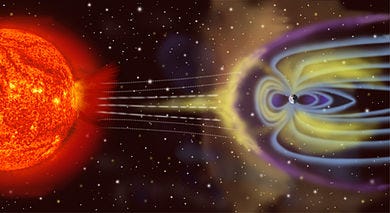September 1859: Telegraph operators leap back as their machines spark and ignite, paper catching fire on their desks. Outside, the night sky blazes crimson and emerald, bright enough to read by at 2 a.m. People pour into streets from Cuba to Canada, staring skyward in terror and awe as the heavens themselves seem to burn. Some believe the end times have arrived. Newspapers report birds singing and children waking, confused by what appears to be dawn breaking at midnight.
This was the Carrington Event – the most powerful geomagnetic storm in recorded history. A massive solar flare sent a cloud of charged particles hurtling toward Earth, creating electrical currents strong enough to melt telegraph wires and set equipment ablaze. And all of this happened when electricity was merely a scientific curiosity, not the foundation of civilization.
What if it happened again? Today, those same ribbons of green and purple that dance across northern skies aren't just cosmic eye candy – they're solar radiation that could send us back to a pre-digital era faster than you can say "1999."
Even a moderately severe solar storm could alter the GPS systems that coordinate global air traffic, provide precise timing for banking transactions, synchronize power grids, and guide emergency vehicles. One major solar flare and suddenly we'd all be unfolding paper maps again.
Scientists predict peak solar activity will hit between summer 2025 and 2026 – potentially delivering a Carrington-level event that would essentially force-teleport us back to the 1990s, exactly when our collective nostalgia has been begging to return.
Want to know what happens if the sky grants our wish for simpler times through the most spectacular light show in 166 years?





